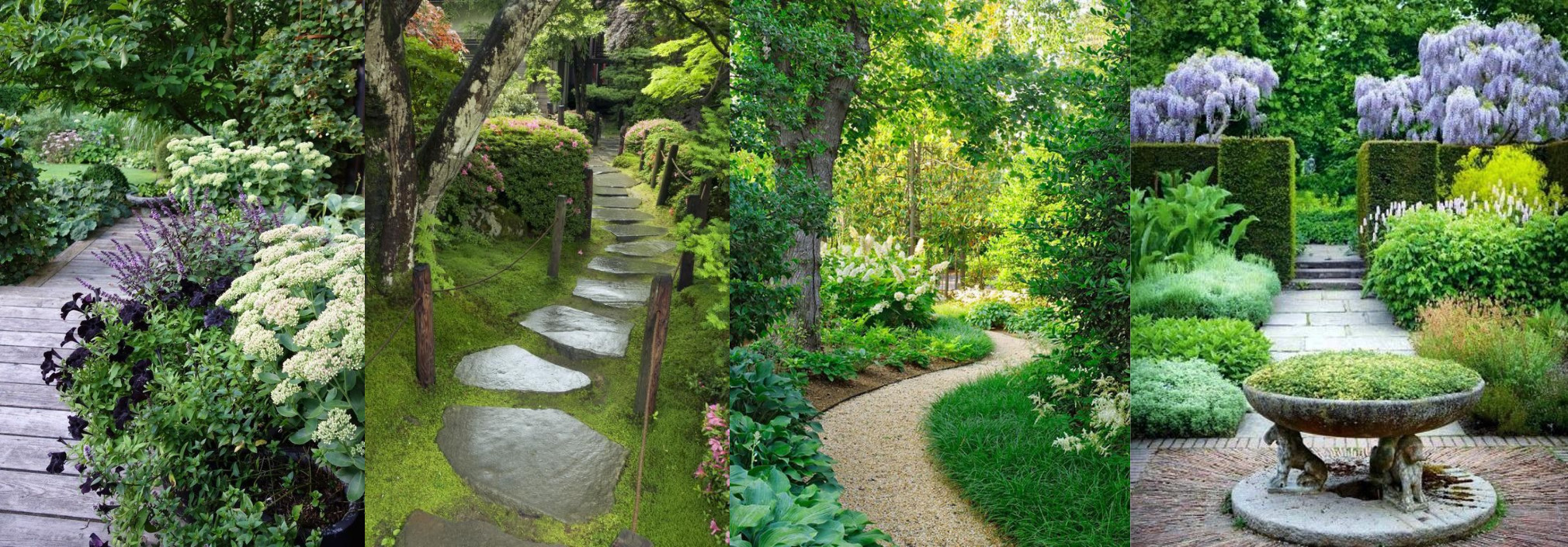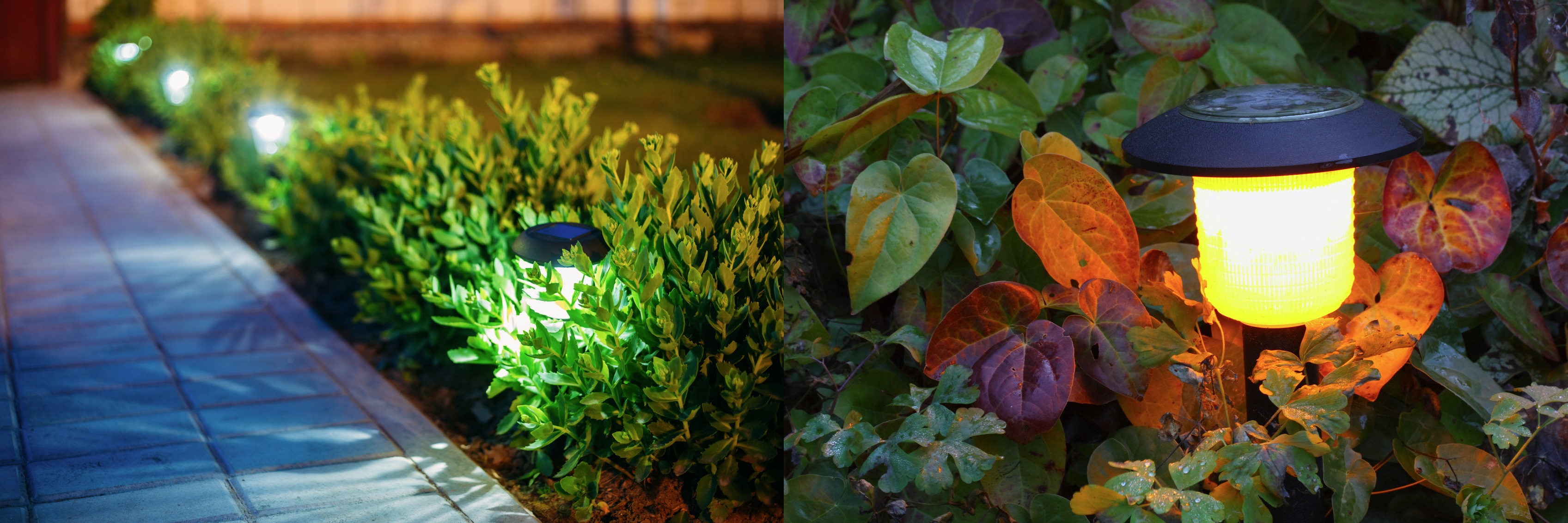A garden path is more than a way to get from A to B – it’s a connection, a guide, and it helps provide a sense of order. In fact, it can set the tone for your whole yard…
First things first – Before you create your path or walkway, consider where you want it to lead, as well as the ‘feeling’ you’re trying to create with it. What kind of spaces do you want to connect to each other – front door to pavement, patio to pool, kitchen door to veggie patch, etc? Do you want a quick and formal straight path with right angles, or do you want something more informal that leisurely curves its way around? Also, what kind of budget have you got to work with, as this will determine the width, length and your material options.
Size and shape – Next up are the dimensions of your path, relative to the size of your yard as well as the number of feet it will need to accommodate. Will visitors have to walk single file or will there be room for them to walk next to each other, allowing for conversation? Do you want to get from the driveway to the front door quickly or do you want it to be a more of a journey, guiding the eye to attractive features and making visitors slow down or stop along the way? A straight line will direct traffic much quicker than say, a zig-zag, which will lend a more meditative feeling to a path. As will an s-shape path, which creates a feeling of tranquillity as well as curiosity about what’s around the corner. Small front yards look best with a simple straight walkway, while a curved path can add interest and intrigue to a bigger back garden.
Material choices – From simple gravel to decorative pavers, there’s a lot to choose from in terms of pathway materials. First off, you should select materials that complement the exterior style of your home. Also, some materials are easier to tread on than others – solid paving, such as concrete, stone or brick are easier and safer to walk on than stepping stones or gravel (ouch for bare feet), for instance. But then, gravel does win hands down in the cost department, it comes in a range of earthy colours, in a variety of sizes and it’s good for drainage. As for stone pavers, these can bring a formal or informal feel to a space depending on the way they’re laid, their shape, colour and texture. You can even combine different types of stone for added interest (think mosaic or patchwork patterns here). Stone is generally more expensive, but it works well and can last a long time. Concrete is easy to walk on and maintain, plus it can be poured into almost any shape (think giant stepping circles or rectangles, or one long corridor) and coloured to suit your home and the landscape – making it one of the most versatile pathway choices. Brick paving is long-lasting, has timeless appeal, can be easily repaired and laid in a variety of patterns. It can also be used with other paving materials such as concrete, natural stone and cobblestones in order to create a unique garden path. And don’t forget wood, as long as it’s sealed and stained, and grass (yes, grass) which can be mown into a ‘path’ to separate flowerbeds.
More hints and tips…
• When deciding on where to put your path, keep in mind that it should encourage a natural flow from one area to another – the destinations should be obvious.
• Use a combination of paths as an alternative to grass if you’re after a low-maintenance garden.
• Vary the width of a path at certain points in the garden to indicate that the visitor has arrived somewhere worth lingering, such as at a fishpond or garden bench.
• Soften the space between stepping stones or pavers with a groundcover like fragrant thyme, dwarf grasses or Lilyturf (just make sure that it’s easy to walk on and that it won’t grow too tall).
• Use strategically-placed path lighting (lanterns, lamps, posts, recessed fixtures and/or solar) to illuminate the path after dark.
• Don’t overdo it with the curves, because then people will take shortcuts across the path instead.
• Bricks, laid lengthwise, can create the effect of movement along a path; ideal for a quick walk to the front door.
• Edging a path helps create a more manicured look and also helps to emphasise its shape – plus it helps to keep loose material like gravel, pebbles and mulch in place.
• Install stepping stones evenly, and not too wide apart, to prevent tripping and falling.
• Consult with a landscape designer for advice if you’re unsure about design or material choices.











Leave a Comment